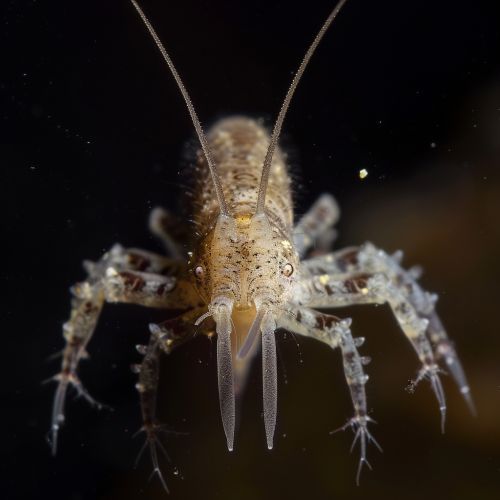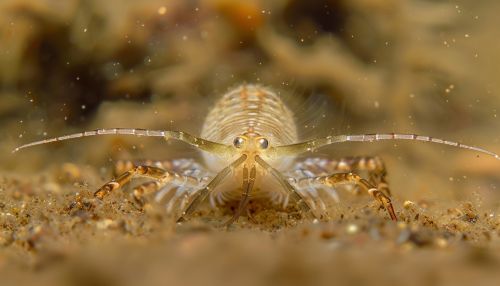Copepods
Introduction
Copepods are a group of small crustaceans found in the sea and nearly every freshwater habitat. They are members of the subphylum Crustacea (class Copepoda), some 13,000 species of which have been described. Copepods are generally very small, ranging in size from 1 to 2 mm, but with a few species reaching up to 10 mm. They are an integral part of the oceanic food web, serving as primary consumers that feed on phytoplankton and in turn, are preyed upon by larger animals like fish and whales.


Anatomy and Morphology
Copepods possess a typical crustacean body plan with a head, thorax, and abdomen. The head and thorax are often fused to form a cephalothorax, which is covered by a shield-like carapace. The body is elongated and cylindrical in shape. The head bears two pairs of antennae that serve in sensory perception. The first pair of antennae is usually long and conspicuous.
The thorax bears five pairs of legs. The first pair of thoracic legs is often modified to assist in feeding, while the remaining legs are used for swimming. The abdomen is typically short and bears the genital openings and a pair of caudal rami, which are forked appendages at the end of the body that serve in locomotion.
The body of copepods is covered by a thin but tough cuticle composed of proteins and chitin, which provides protection and support. The cuticle is periodically shed and replaced during a process known as moulting.
Life Cycle and Reproduction
Copepods exhibit a complex life cycle with a series of moults between stages. The life cycle begins with the egg, which hatches into a nauplius. The nauplius is the most primitive larval stage in the crustacean life cycle and is characterized by the use of antennae for swimming. The nauplius undergoes several moults, transforming into a copepodid larva, which more closely resembles the adult form. After several more moults, the copepodid becomes a sexually mature adult.
Reproduction in copepods is usually sexual, with separate male and female individuals. However, some species exhibit parthenogenesis, where females produce offspring without fertilization by a male. Fertilized eggs are typically released into the water, but in some species, they are carried by the female until they hatch.
Ecology and Distribution
Copepods are ubiquitous in both marine and freshwater environments. They are found in all types of aquatic habitats, from the deepest ocean trenches to the smallest freshwater ponds. Some species are planktonic (free-swimming in open water), while others are benthic (living on the ocean floor).
Copepods play a crucial role in aquatic ecosystems. They are primary consumers, feeding on phytoplankton and other microscopic algae. They are a major source of protein for many larger animals, including fish, birds, and whales. Some copepods also feed on detritus and bacteria, contributing to the decomposition process and nutrient cycling in their ecosystems.
Economic and Ecological Importance
Copepods are of significant economic and ecological importance. They are a key food source for a variety of commercially important fish species, making them a crucial component of marine and freshwater food webs. Some species of copepods are used in aquaculture, for the feeding of fish larvae.
From an ecological perspective, copepods play a vital role in the cycling of nutrients in aquatic ecosystems. They help to convert the energy stored in phytoplankton into a form that can be used by larger animals. Furthermore, their feeding activity helps to regulate algal populations, preventing harmful algal blooms.
